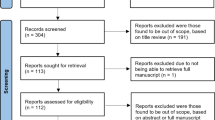Abstract
Participation of adult cancer patients in US-based clinical trials has remained near 3% for decades. Traditional research methodology reaches a small fraction of the target population with a fixed number of predetermined sites. Solutions are needed to ethically increase patient participation and accelerate cancer trial completion. We compared enrollment outcomes of traditional and patient-focused research methodologies. A patient-prioritized method (Just-In-Time; JIT) was implemented in parallel with traditionally managed sites in three cancer trials. JIT research sites were initiated after candidate patients presented, while traditional sites were initiated in advance. JIT sites enrolled with mean rates no less than and up to 2.75-fold greater than traditional sites. Mean patients enrolled per site was comparable (JIT = 1.82, traditional = 1.78). There were fewer nonenrolling JIT sites (2/28, 7%) compared to traditional sites 19/52, 37%). This retrospective analysis supports JIT as a prospective solution to increase cancer clinical trial enrollment and the efficiency of clinical trial administrative activities.
Similar content being viewed by others
References
American Cancer Society. Cancer Facts & Figures 2011. Atlanta, GA: American Cancer Society;2011.
Howlader N, Noone AM, Krapcho M, et al., eds. SEER Cancer Statistics Review, 1975-2008. Bethesda, MD: National Cancer Institute. https://doi.org/seer.cancer.gov/csr/1975_2008/. Based on November 2010 SEER data submission. Posted to the SEER web site 2011.
Mariotto AB, Yabroff KR, Shao Y, Feuer EJ, Brown ML. Projections of the cost of cancer care in the United States: 2010–2020. J Nat Can Inst. 2011;103(2):117–128.
Schilsky RL, Allen J, Benner J, Sigal E, McClellan M. Commentary: tackling the challenges of developing targeted therapies for cancer. Oncologist. 2010;15(5):484–487.
Tejeda HA, Green SB, Trimble EL, et al. Representation of African Americans, Hispanics, and whites in National Cancer Institute cancer treatment trials. J Natl Cancer Inst. 1996;88:812–816.
Lara PN, Paterniti DA, Chiechi C, et al. Evaluation of factors affecting awareness of and willingness to participate in cancer clinical trials. J Clin Oncol. 2005;23:9282–9289.
Brief summary of Harris Interactive Survey (2000) findings. Coalition of Cancer Cooperative Groups Publications. https://doi.org/www.cancertrialshelp.org/CTHpdf/1226-9.pdf. Accessed April 3, 2012.
Friedman A, Cain DF. National Cancer Institute-sponsored cooperative clinical trials. Cancer. 1990;65(suppl 10):2376–2382.
Go RS, Frisby KA, Lee JA, et al. Clinical trial accrual among new cancer patients at a community based cancer center. Cancer. 2006;106:426–433.
Klabunde CN, Springer BC, Butler B, White MS, Atkins J. Factors influencing enrollment in clinical trials for cancer treatment. South Med J. 1999;92:1189–1193.
Comis RL, Colaizzi D, Miller JD. Cancer clinical trials (CCT) awareness and attitudes in cancer survivors (Ca surv). J Clin Oncol. 2006;24(18S):6061.
Dilts DM, Sandler AB. Invisible barriers to clinical trials: the impact of structural, infrastructural, and procedural barriers to opening oncology clinical trials. J Clin Oncol. 2006;24:4545–4552.
English R, Lebovitz Y, Griffin R, Forum on Drug Discovery, Development, and Translation, Institute of Medicine. Transforming clinical research in the United States: challenges and opportunities: workshop summary. Washington, DC: National Academies Press; 2010, chapter 3.
Handelsman D. Optimizing clinical research operations with business analytics. 2011 SAS Global Forum Proceedings. 2011; 204.
Durivage HJ, Bridges KD. Clinical trial metrics: protocol performance and resource utilization from 14 cancer centers. J Clin Oncol. 2009;27(15S):6557.
Fleming R. Barriers to clinical trials. Part I: reimbursement problems. Cancer. 1994;74:2662–2665.
National Cancer Institute, Advisors BoS. Report of the National Cancer Institute Clinical Trials Program Review Group. Bethesda, MD: National Cancer Institute; 1997.
Cohen GI. Cancer clinical trials; a primer for participation of community physicians. Am Soc Clin Oncol. 2002; 283–289.
Klabunde CN, Keating NL, Potosky AL, et al. A population-based assessment of specialty physician involvement in cancer clinical trials. J Natl Cancer Inst. 2011;103:1–14.
Cameron D, Cooper M, Haward B, et al. Four-fold increase in recruitment of cancer patients to NCRN portfolio studies between 2001 and 2010: a tale of investment bringing returns. Paper presented at: National Cancer Research Institute Cancer Conference; 2010.
Dilts DM, Sandler AB, Baker M, et al. Processes to activate phase III clinical trials in a cooperative oncology group: the case of cancer and leukemia group B. J Clin Oncol. 2006;24:4553–4557.
Markman M. The clinical trials cooperative group program: time for a painful reality check. Clin Oncol News. 2011;06(05).
Cheng SK, Dietrich MS, Dilts DM. A sense of urgency: evaluating the link between clinical trial development time and the accrual performance of cancer therapy evaluation program (NCI-CTEP) sponsored studies. Clin Cancer Res. 2010;16:5557–5563.
Stewart DJ, Kurzrock R. Cancer: the road to Amiens. J Clin Oncol. 2009;27(3):328–333.
Braiteh F, Kurkrock R. Uncommon tumors and exceptional therapies: paradox or paradigm? Mol Cancer Ther. 2007;6:1175–1179.
Mikhail IS. Design issues in the study of rare cancers. Paper presented at: 2nd NCI Epidemiology Leadership Workshop: Understudied Rare Cancers; September 2005.
Wiener MB, Newman HM, Spradley EA. Revolutionizing oncology patient enrollment in clinical trials: Just-In-Time approach. J Clin Oncol. 2007; 25(18S):6577.
Lynam EB. Clinical trials in the age of personalized cancer medicine: the evolution of a more efficient, patient focused clinical research system. DIA Annual Meeting Proceedings 2010; 30691.
Smith BD, Smith GL, Hurria A, Hortobagyi GN, Buchholz TA. Future of cancer incidence in the United States: burdens upon an aging, changing nation. J Clin Oncol. 2009;27(17):2758–2765.
Patterson F, Gevorkian S. Challenging oncology indication and the Just-In-Time (JIT) approach: a case study of collaboration between SMO and sponsor. Paper presented at: 3rd Annual Patient Recruitment in Clinical Trials Symposium; March 2010.
Baker M. Protecting patient rights and regulatory compliance in a patient-directed clinical research. DIA Annual Meeting Proceedings 2010; 30691.
Author information
Authors and Affiliations
Corresponding author
Rights and permissions
About this article
Cite this article
Lynam, E.B., Leaw, J. & Wiener, M.B. A Patient-Focused Solution for Enrolling Clinical Trials in Rare and Selective Cancer Indications: A Landscape of Haystacks and Needles. Ther Innov Regul Sci 46, 472–478 (2012). https://doi.org/10.1177/0092861512443436
Received:
Accepted:
Published:
Issue Date:
DOI: https://doi.org/10.1177/0092861512443436



